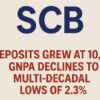
Sandeep Sethi, Leadership Team at ICICI Bank
In the previous article (https://bankingfrontiers.com/solving-product-design-puzzle-by-startups/) I discussed how startups, or even established organizations, can ensure product fitment and build basic service proposition with minimal time investment right from the word go through usage of some of the age-old tools available in the quality toolkit. I also mentioned that they do not consume much time, they do not require any knowledge of statistics and we do not need any software support to use them. Hopefully some of you would have tried to explore these on Google. I have received requests to elaborate more on these, which was anyway the plan. Just in case those of you who tried and found it challenging on how to get started on these, let’s move ahead with introduction to these tools. Cautioning again that description below is both conceptual and theoretical in nature and moving slow is recommended. Anyway, you possess special skills because startup itself if not everybody’s cup of tea. Of the three tools recommended for start-ups, QFD requires maximum effort. Yes, it is the most laborious. Does that mean it is difficult to use? No, it is not. I would like to point out that “difficult” is not the synonym of “laborious”. It simply has more steps and that’s why in the age of fast food and speed dating, this is least leveraged tool. That by no means brings down the benefit of using it. There is no other tool in comparison which gives so many details in a single snapshot. Plan full day if you want to do it thoroughly. You will surely be able to take benefit if you do it as an exercise for your products as you read along.
CUSTOMER! CUSTOMER! ……..CUSTOMER!! – The life begins and ends with the Customer!!
One of the areas that has undergone biggest transformation with industrialization is customer centricity. We invented the use of this word and use it multiple times in today’s age but the biggest casualty with industrialization is customer centricity only. During the age of customized manufacturing, requirements of each customer were discussed face to face and accordingly products were made. With mass production, customers have distanced from the manufacturer and the goods are manufactured based on inputs from intermediaries. Sometimes these intermediaries, who are supposed to best understand the customer requirements, are called RnD teams, customer service teams, product development teams, etc, who, many a times, further depend upon surveyors or research agencies for inputs. Quite often there are dropping of balls while transferring the insights and stated requirements. Thus, following key questions naturally come to mind:
1) How well do we understand customer requirements, and have we planned to cater to their stated requirements while creating our solution?
2) Can we understand the customer even better than they understand themselves?
3) Most importantly, can we know in advance how will the customer judge our product based on what they have demanded?
QFD helps to direct attention to those factors that matter the most for customers while designing products or services.
1.Quality Function Deployment (QFD), also called House of Quality, is better known as a tool to convert Voice of Customer (mostly qualitative) into Voice of Engineer (all specifications).It derived name of House of Quality because of the triangle (looking like roof) at the top and the boxes below look like pillars of house. Originated in 1972 at Mitsubishi’s Kobe shipyard, Toyota, Ford, GM, AT&T were among the first take benefit from it. This requires cross functional team participation and the beauty is that this summarizes all details “on a single sheet” thus giving you a single view of the whole design and competitive placement. In the process, it helps bring clarity as well as answers following sub-questions associated with the main question asked above. As you proceed point by point, would you like to try answering each point and then let’s see if we can create QFD for your area?
At high level, the picture below shares a glimpse of how the House of Quality looks like indicating the area to work on and the sequence in which it needs to be worked. It summarizes the points discussed below. I will strongly recommend you to watch any QFD example on Youtube post reading to get further clarity and again read the explanations below as you attempt to use it.

The numbers written in the left extreme of each block are the sequence of steps and mapped to the description of each step explained below:
1.1 Starting with customer in mind, have we even captured the customer expectations? Even if the startup idea is based on identification of a specific gap in the existing products/ solutions available in the market, however wrt solution envisaged, it is important to list the customer expectations. It is strongly recommended to have direct interaction with a number of customers and then list these. If not, those in direct contact with potential customers are better prepared to list them down. While in a physical product, this is well understood, even in a software or apps, requirements would be in the form of speed, latency, UI, number of clicks, time to execute, etc. This part covers the WHY of our project, the very reason of our creating product is to deliver on these.
Some digital products these days not only serve external customers but also have features which eliminate some of the work of internal stakeholders as well as provide status reports or progress visibility. Thus it is important not to forget that internal stakeholder is also a customer and capture their expectations too.
1.2 Do we know out of many expectations mentioned by the customer, which are most important in the eyes of the customer ie, order and magnitude of priority? Again, rather than guessing ourselves, we must check with some prospective customers and then write. It is ok to use either a scale of 1-10 point or 1-5 points, with higher number indicating higher importance. This is titled under Importance Rating.
1.3 Which all actions do we need to take to meet customer expectations? It is here that some of the modern technologies like AI, RPA, ML, etc, might also appear but purely depending upon the expectations. This explains HOW we are going to meet customer expectations. If security of app is one of the expectations (whether articulated by the customer or internally recognized), do we plan to meet that by getting it certified on a particular standard or from a particular agency or will we simply secure it using encrypted data.
1.4 Each of the customer expectations might be getting addressed through a single / multiple actions. Do we know which all play this role and how much impact each action is likely to have? This is indicated by relations matrix. While we cannot quantify the exact impact, we can certainly capture if the action is having high impact or low impact. To bring differentiation, we mention rating of 9 in the intersection grid if that particular action if going to have high impact towards meeting customer expectations. Similarly, rating of 3 and 1 if the impact is medium and low respectively. We leave the intersection cells blank if a particular HOW is not going to impact a particular WHY.
To bring more clarity on this point, let’s take the example of a pizza company capturing customer expectations and one of the customer expectations (WHATs) is of a competitively priced pizza. For meeting those various requirements, the list of HOWs also include material used for preparation, method of delivery and advertising spend. The last two HOWs might be in the list because of some other WHAT but they do affect cost. Looking at this, it looks like that material used has high impact, delivery method has medium impact and advertising spend has minimum impact on pricing of pizza. Thus they will have the ratings 9, 3 and 1 in the relations matrix.
1.5 Coming to the construction of roof of this house (as below), the row immediately above HOWs is the target direction sign to indicate if a particular HOW is higher the better or lower the better. For example, with processing speed, higher is better. On the other side, with number of clicks, lower is better. Same way, strength and reliability of a physical product are higher is better, but failure rate or maintenance complexity are lower is better. Together with the next step, ie, inter-relationships, the roof helps us making right trade-offs.

1.6 Do we understand the Co-relation between all HOWs (actions)? What if in our effort to improve a particular HOW, we end up worsening the other one because they are inversely related?
This is slightly tricky one! It is not necessary that all actions will have some inter-relationship. There might be actions which are complimentary. There might be some conflicting actions ie, if you want to increase one, the other has to be kept low, or vice versa. It is these conflicting actions that force us to make trade-offs. A simple example is from design of a vehicle. Customer expectations of quick pick-up and economical vehicle are most likely to be met by a high HP engine and low overall weight. For engine to be of a high HP, it has to be a bigger engine (today’s technology constraint) and hence will be bulky. Which means we face two conflicting actions and now need to make a trade-off of limiting one of them. What should be that sweet spot / trade-off point is the decision that team will make? This information about inter-relationships is useful as many a time we get carried away in improving a particular feature and take our eyes off other aspects without knowing if improving this will have a negative impact on the other. Thus, it helps in making right trade-offs. Having known where to trade off, the methodology does not dictate what calls need to be taken and leaves it to the technical expertise of the team to take the right call.
1.7 Now that we have (a) understood requirements (WHYs), (b) listed actions (HOWs), (c) we know co-Relations, (d) we have listed relation of each HOW with WHY, do we know the order of impact of various actions? Which are the most impactful internal actions (HOWs) and hence should command maximum resources and attention from our side?
Well, this weighted technical importance too is simple to arrive at. Starting from 1st HOW, move down column wise. Multiply each relation number (those 9, 3 or 1) with the corresponding importance rating of WHAT and add all. This way the row containing importance score gets filled and the highest score are the most important parameters to work on.
1.8 Unless we are unique and there is no competition, which is a remote possibility, it is important to look at where our product stands wrt competitor offerings against each HOW (bottom row). Have we finalized specifications for all the actions and are we measuring it in right measurement units? List what targets we take initially and then what specifications the competitors have against this HOW. Usually this is gathered through connects in that organization as the data on how is not openly available in the market. This benchmarking and comparison helps us identify which are the areas where our offering is weak and hence we need to work more.
1.9 Same way as in step 7 above, if we move horizontally, as in picture, we get to know prioritized customer requirements. They highlight if there are any of customer requirements that we will fail to satisfy in the current design and therefore need to plan for that or take a call not to address that expectation. They also help us understand how the customer is likely to experience our product and hence can anticipate customer satisfaction. Any difference in the order of magnitude between “prioritized customer requirements” and corresponding “importance ratings” clearly means our best feature is different than what customer asked for. Blank columns indicate that there are actions we are taking but they will not help solve any of customer requirements. This is a non-value add activity which should get eliminated immediately.
1.10 The final step is to look at where our product stands wrt competitor offerings against each WHAT (second column from right). As we did benchmarking and comparative analysis on HOWs, in the same way we again do benchmarking and comparison, but this time wrt each WHY, ie, expectation. This helps us identify the areas where our offering is weak and hence we need to work more. Usually the information is available as product features and USPs or is best populated by gathering comparative feedback from customers, but start-ups can themselves experience competition and populate for comparison.
At the execution level, if you feel ready to prepare one, you might like to use the template as below:

Looking at each of the questions and answering them one by one in itself will throw some new insights but when we get all this on a single sheet, it’s simply amazing. This can be used as knowledge repository and can also be used later to refer to the calls / trade-offs we took. Though we can go up to 3-4 levels of iterations, just starting off itself gives invaluable inputs and bring clarity. By the way, for those having doubts about time delay if they adopt QFD, one of the key characteristics which helped popularize QFD in first instance was getting higher quality products to market faster and at a lower cost. So, go ahead and use this without any hesitation!! See if you also get the desired results. Even if there are just a handful of new insights, an output from a couple of hours of effort is worth it to make us more competitive. Isn’t it?
To be continued…
Currently Sandeep is Group Head – People and Process Optimization, as General Manager. He has been in various leadership roles at ICICI Bank in the areas of Quality, Innovation, Infrastructure Facilities Management, Business Process Re-engineering, Branch Customer Experience & Service Improvement. A 6 Sigma MBB, he is also a Lean Manufacturing expert and brings rich experience of working in Manufacturing, Business Process Outsourcing and Banking while working with organizations like LG Electronics, Videocon, HCL Hewlett Packard, Wipro and now ICICI Bank.
Contact the author at [email protected]








